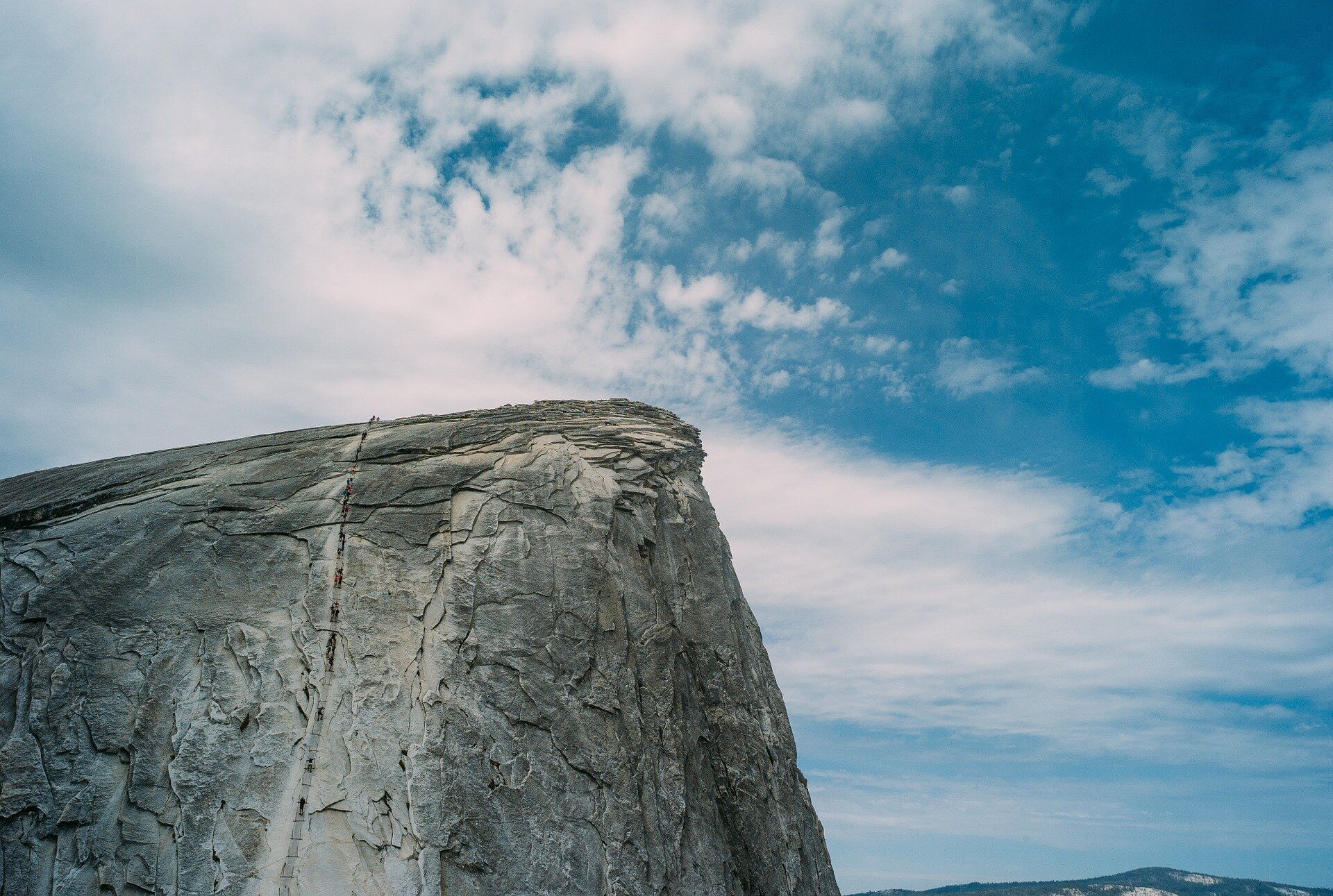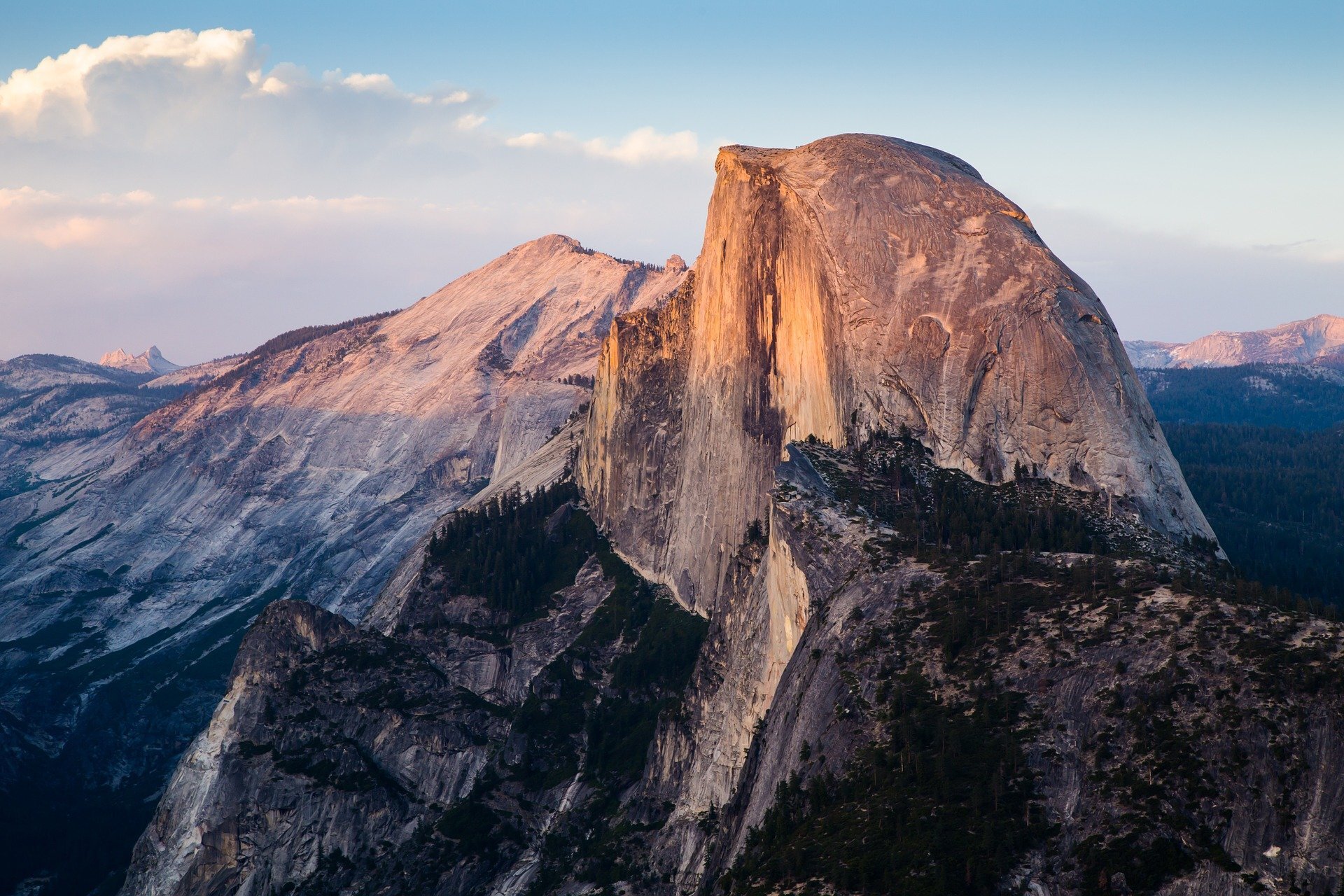4 Reasons Why You Should NOT Hike Half Dome
I hiked Half Dome with my brother in 2017 and it was the most thrilling experience of my life at the time. Hiking 8 miles (mostly uphill), a 400-foot climb up the cables, standing at the top, and being able to look down on Yosemite Valley is an experience that’s hard to describe.
As incredible as it was, it came at a price. As my brother and I were making our way up Sub Dome, I realized how truly unprepared we were. Don’t get me wrong, I THOUGHT we were prepared but truth be told, we probably had no business being up there. That’s a tough pill to swallow, but it’s the truth.
All went well, though. We made it to the top without any major problems and managed to make it back to the car despite being low on energy and close to dehydration. I knew the experience of hiking Half Dome would make for an awesome addition to this blog (you can read that article here) but I started thinking, “what about the other part of it that no one talks about”?
The “part” I’m referring to is instead of encouraging everyone and anyone to hike Half Dome, what if I gave people reasons why they SHOULDN’T hike it? That’s the purpose of this article. We all know the reasons why you should, but there are plenty of reasons why you shouldn’t. So read on to find out the four reasons why you should NOT hike Half Dome.
1) It can be dangerous
I’m not going to sugarcoat it, there is potential, life-threatening danger on this hike. Truth be told, you’ll find danger in anything you do. Just driving to the trailhead is more dangerous (statistically speaking). That’s why I’m saying it CAN be dangerous. I believe most of the danger can be mitigated as long as you’re prepared for it.
That said, people have died on this hike. They’ve died both on the trail and on the cables. As of 2019 (2020 numbers have not be listed yet) there have been:
At least 13 deaths
291 accidents
& 140 search & rescue missions
This is just since 2005. Thankfully, there were no confirmed deaths on Half Dome in 2020. The most recent was in 2019 when a young women from Arizona slipped on the steepest part of the climb and slid 500 feet to her death.
Weather also plays a role in the level of danger. The granite is smooth and slick from all the hiking boots that’s traversed over it over the years and when it rains, it becomes incredibly dangerous to attempt an ascent or descent. You do NOT want to be up top (or even on the base) when lightning strikes.
2) You have a medical condition
If you have vertigo, are prone to seizures, have heart or lung problems, bad knees, etc, you shouldn’t hike Half Dome. Vertigo, especially, can cause a fatal accident to occur. Most of the hike takes place on your standard hiking trail but towards the end, you’ll need to navigate your way up Sub Dome and a 400-foot climb up the cables.
Hiking Half Dome with heart issues also wouldn’t be wise. In 1995, a man from Huntington Beach collapsed from heart failure as he was making his way up the cables and fell. There have been others who have had heart attacks while hiking but thankfully survived their ordeal.
Half Dome isn’t worth your life or making your condition worse. There are many trails in Yosemite that are just as spectacular that wouldn’t put you in unnecessary risk. North Dome, for example, is an excellent alternative that ends with any epic view of Half Dome. You can read that article here.
3) You have a low level of fitness
While being a top level athlete isn’t required, being in at least decent shape is. One way you can find out how in “hiking” shape you are would be to go for a hike on an easier trail and pay attention to your breathing. If you’re huffing and puffing, then Half Dome is too dangerous.
Thankfully, this is something that can be overcome. If you’re serious about hiking Half Dome start training MONTHS before, even a year! The sooner the better. Join a gym and utilize a stair master and squat press. Go hiking regularly and keep upping the difficulty. The higher elevation you train at, the better prepared you’ll be.
4) You’re inexperienced
This one is pretty self explanatory and like the reason above, can also be overcome. If you’re new to hiking, starting with Half Dome wouldn’t be ideal. Your best bet would be to start out small. Like your local park, for example. If you’re coming to Yosemite, some good beginner trails would be:
The Mist Trail (Challenging, but still beginner friendly)
Cook’s Meadow
Elizabeth Lake
Lembert Dome
Cathedral Lakes
Once you’ve put a few of these (or others) under your belt, you can start hiking the more difficult ones that’ll challenge you to up your game and test your resolve. Some of those Yosemite trails include:
Upper Yosemite Falls
Four Mile Trail
Cloud’s Rest
If you can tackle one of these without feeling like you’re going to fall over at any moment, chances are good that you’re ready for Half Dome. If not, then I would definitely stick with the easier ones mentioned above (there’s no shame in it).
Remember, it isn’t just your safety at risk, but you could be putting the safety of other hikers and Park Rangers (if they have to come help you) at risk as well.
= Conclusion =
I hope you’ve found this article helpful in deciding whether Half Dome is a good fit for you. If none of these apply to you then great, get at it. If one does, then remember that NO hike is worth your life and there’s absolutely no shame in admitting when something’s out of your comfort zone. In fact, it’s a respectable trait.
Safe travels.
Please support this website by sharing this article with your friends & family on Pinterest, Facebook, or your favorite social media app.
You can also show your support by reading one or more of the related posts below. Thank you.







